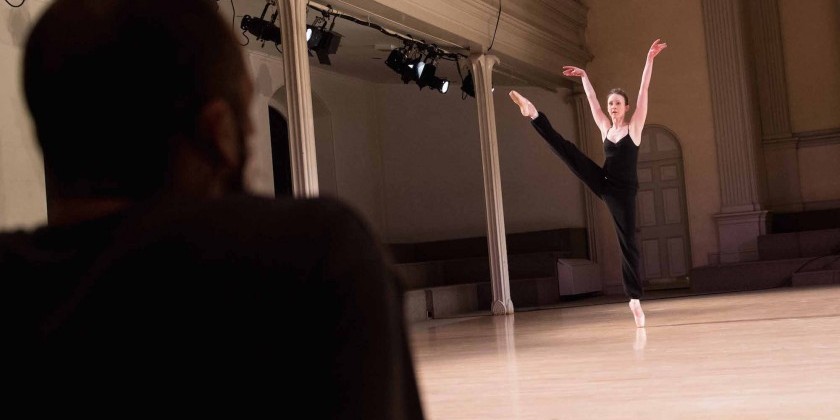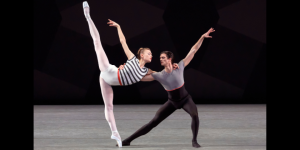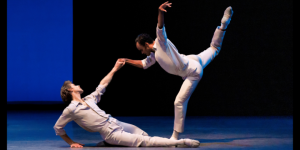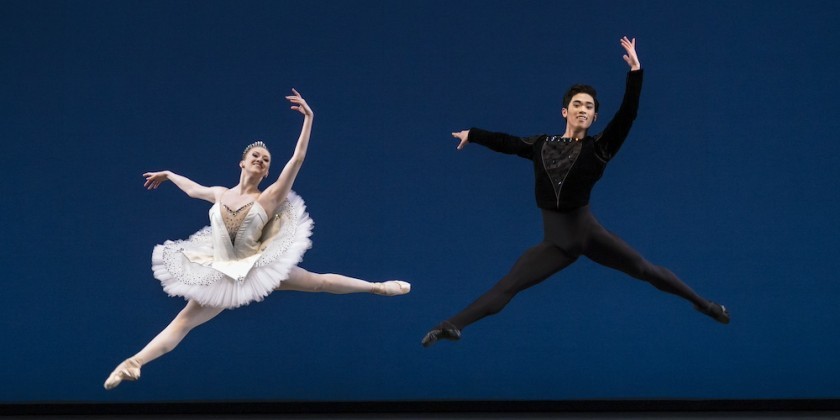Impressions of Danspace Project's Platform 2015: Dancers, Buildings, and People in the Streets (Part 1)

Focus on Process: Kaitlyn Gilliland with Will Rawls / Silas Riener with Adrian Danchig-Waring
Danspace Project's Platform 2015: Dancers, Buildings, and People in the Streets, delivers on its promise of presenting process-focused evenings, for better or for worse. The series, curated by critic Claudia La Rocco, is inspired by the American dance critic and poet Edwin Denby, one of whose classic books of dance writings is entitled Dancers, Buildings, and People in the Streets. La Rocco paired ballet and downtown dancers for each evening (with the exception of Pam Tanowitz, who got her own evening because her work already weaves these two disciplines together) and left the designation of dancer and choreographer intentionally murky.
On February 20, the pairings on the menu were Kaitlyn Gilliland with Will Rawls and Silas Riener with Adrian Danchig-Waring. Gilliland and Rawls presented their collaboration, #loveyoumeanit, in two parts, and the best aspect of the evening was the window we were given into their developing relationship. They devote a great deal of their piece to reading aloud text messages they exchanged over the months of their collaboration. The messages are bitingly intelligent, witty, tender, and peppered with emojis.

The dance produced by Gilliland and Rawls is, unfortunately, less captivating than what we see of their personal relationship. In the first half of #loveyoumeanit, Gilliland directs Rawls. She calls out a few phrases that she has jotted down, which he turns into spiraling, slippery movement. In the second half of their experiment, Rawls directs Gilliland in a balletic solo he created for her. They make it clear that they are rehearsing different sections of a dance, talking it over as they go. In both these moments, it would have been a relief to see more product and less process. Gilliland and Rawls are both striking dancers. It feels unfair that we don’t get to see more movement from them.

In between the two iterations of #loveyoumeanit, Silas Riener imbues the proceedings with a shot of dynamism. He appears alone (Danchig-Waring was unable to perform due to a conflict with his New York City Ballet schedule). With little explanation, we are left to wonder if Danchig-Waring’s absence could be interpreted as indifference toward this project on the part of the New York City Ballet. Gilliland and Rawls' earlier text messages even allude to this scheduling frustration.
Danchig-Waring is visible only virtually, in rehearsal video projected behind Riener. In the clips, he leads Riener in phrases that adhere mostly to ballet. This influence surfaces occasionally in Riener's action, as he soars through the air in grand jumps reminiscent of those so common in men's ballet variations. But the invention, wit, and self-aware humor here are all Riener's as he charges through the space. Riener toys with the idea of process and performance, beginning in practice clothes of muted colors and later stripping to a brightly colored, strapless leotard.

Though fruitful crosspollinations can and do occur between ballet and downtown dance, this evening felt lacking. It may be that the process-focused nature of La Rocco’s Platform undermined the potential of these collaborations. Though process can provide an intriguing glimpse into the mind of an artist, it can be tedious to watch. While the idea of “finishing” a work of art is to some degree artificial, often a performance deadline is just what it takes to create a truly engaging experience.












